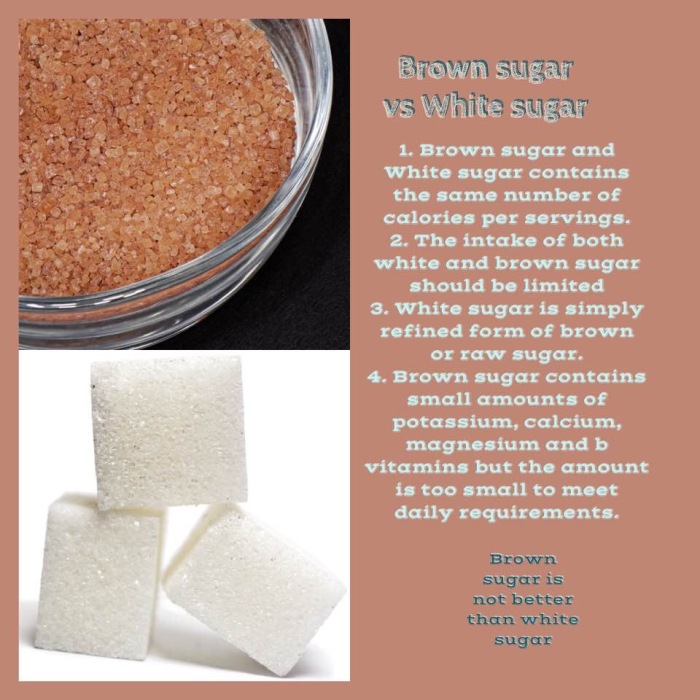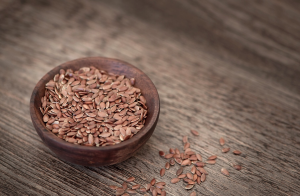
Month: August 2017
BENEFITS OF FLAXSEEDS
Source: BENEFITS OF FLAXSEEDS
BENEFITS OF FLAXSEEDS

Flax seeds (السی کے بیج) is considered among the first healthy cultivated foods. This small seed is powerhouse of many essential nutrients and provides immense health benefits if consumed on regular basis.
History of flaxseeds
The earliest history of people consuming flaxseed is more than 6000 years ago .One of the Roman king Charlemagne has a strong believe on the health benefits of flaxseeds that he in 8th century passed the law for his nation to consume flaxseed .
During 1600 Nicholas Culpeper, a herbal physician uses flaxseed oil for the treatment of conditions like tumours, chest infection, abscesses and inflammation.
In 1950 Johanna Budwig a German biochemist developed a Budwig-Protocol, which suggested cold- pressed linseed oil with cottage cheese and juices for the treatment of cancer, arthritis, digestion, infertility and heart diseases.
Nutritional composition of flaxseeds
Flax seeds are rich in fibre, proteins and fats. 1 tea spoon of flax seeds provides you with 18 kcal, 1.6 grams of fat 0.5 grams of proteins. Fax seeds are rich in poly unsaturated fatty acids particularly omega 3 and omega 6 fatty acids which are essential fatty acids and are not produced by human body and must be obtained from fats and oil.
Health benefits of flaxseeds
Although the health benefits of flaxseeds have not been clearly established, many researches have been carried out which suggest that flaxseeds reduces the risk of cancer, heart diseases, lung diseases and arthritis.
-
Arthritis
Flaxseeds are enriched with omega-3 fatty acids which is used produce prostaglandins in the body. These hormone-like substance reduces inflammation making it beneficial for patients with arthritis.
2. Cancer
Studies suggest that flaxseed seeds are rich in ALA ( alpha linoleic acids ) which inhibit the growth of tumours in the body. The lignans found in flaxseeds may provide a shield against breast cancer, by blocking enzymes which are involved in hormone metabolism and interfere the growth and multiplication of tumour cells.
3. Diabetes
Recent studies suggest that presence of lignans in flaxseeds helps to lower the blood sugar levels .
4. Heart diseases
Flaxseeds are rich in omega-3 . It helps to lower the cholesterol levels in blood. Lignans in flaxseed also help to prevent plaque building in arteries.
How to use flaxseeds in diet
The ground flaxseeds are usually recommended because the omega-3 found in them is readily absorbable in ground form. The recommended daily allowance of ground flaxseeds in diet is 1 tbsp.
- Flaxseed can be sprinkled over your daily porridge or yogurt ,salad and desserts.
- Flaxseed can be added while making cakes, muffin and biscuits .
- Flaxseed oil can replace olive oil in salad dressings.
Side effects related to excessive consumption of flaxseeds
Like many other food items the excessive consumption of flaxseed might create problems and health hazards which include
- Loose stools and diarrhoea due the presence of large amount of fibre in flaxseeds. It should not be used by patients with intestinal ulcers as it may aggravate the problem.
- Because of anti-clotting property, the excessive consumption of flaxseed can obstruct the blood clotting.
It is essential to consume flaxseeds in recommended amount, in order to gain maximum benefit of this super food.
By,
Aliya Waqas
MY PLATE
 My plate was designed by USDA in 2011. So far it is a simplest guide to healthy eating. It encourages you to develop a healthy eating style throughout your life. It provides basic guidelines about the kind and quantity of food which you can take all day.
My plate was designed by USDA in 2011. So far it is a simplest guide to healthy eating. It encourages you to develop a healthy eating style throughout your life. It provides basic guidelines about the kind and quantity of food which you can take all day.
The plate is usually divided in four sections of fruits, vegetables , grains and proteins with a small circle of dairy lies on a side.
different foods groups and their recommended allowance
1. Fruit group.
The recommended daily amounts of a normal healthy individuals is 11/2 -2cups for individuals with less than 30 minutes of physical activity. All the fruits, dried fruits and 100% fruit juices are included in fruit group. It is important to note here that 1/2 cup of dried fruit is equivalent to 1cup of fruits.
2. Vegetable group.
21/2 cups of vegetables are recommended for healthy adult women of age 19-50. For adult man it is 3 cups.
Vegetables group includes all fresh, frozen canned or dehydrated vegetables . Due to the nutrient content of different vegetables , they are divided into further sub groups: starchy vegetables, red and orange vegetables, dark green vegetables, beans and peas and other vegetables.
3. Grain group.
Food made from wheat, rice, oat, batley, corn falls in grain group. Bread, chapati, breakfast cereals, porridge are included in grain group. Grain group is of two types. Whole grains and refined grains. The amount of grains needed for healthy adult women is 6oz and adult male is 8 oz.
1 slice of bread, 1/2 chapati, 1/2 cup rice, cooked pasta count as 1 ounce.
4. Protein group
Protein group include all type of lean meat, poultry, fish, lentils, beans and nuts. Daily recommended intake from protein group for a healthy woman with sedentary lifestyle is 5 oz and for a healthy man is 6 oz.
It is important to note here that 1 ounce of meat, poultry or fish, ¼ cup cooked beans, or ½ cup ounce of nuts or seeds is equal to 1 ounce.
5. Dairy group
The daily milk requirement of a healthy adult is 3 cups. It include low fat milk, yogurt, cheeses. Cream cheese, butter or dairy cream are not included in this group.
6. Oils and fats
In my plate oil is not included as a food group, but due to the essential nutrients it provides, they are included in our daily diet. Some commonly used oils are corn oil, sunflower oil , canola and other vegetable oil. Butter and desi ghee are also considered as oil The recommended daily allowance for oil is 3-4 tsp.
Salient features of MyPlate
The important features pf MyPlate are
- Eat variety of food in small quantities.
- Fill half of your plate with fruits and vegetables.
- Use low fat milk and dairy products.
- Drink plenty of water. Avoid sugary drinks an juices.
- Food with less sodium and salt also reduces the risk of hypertension.
- Half of your grain group should consist of whole grains with high fibre content.
Conclusion
A healthy diet is the diet which is adequate, balanced and vary according to the individuals, for eg , age, lifestyle, taste, preferences and food habits. It includes all the food groups in recommended amount .
MyPlate is the easiest way to check the quality and quantity of your diet, and should be kept in mind before planning your meal.
By,
Aliya Waqas
Mango ( the king of fruit)

Magnesium
By Aliya Waqas
 Magnesium is one if the essential mineral needed for good health. Magnesium is found in soil in large amounts and if the food is grown in that soil it is automatically rich in magnesium. These days the chemical treatments to increase the production of crops and use of commercial fertilisers such as calcium, potassium and phosphorus may reduce the amount of magnesium which is naturally preserved in soil and this is the reason more than 80% of the people are deficient in magnesium.
Magnesium is one if the essential mineral needed for good health. Magnesium is found in soil in large amounts and if the food is grown in that soil it is automatically rich in magnesium. These days the chemical treatments to increase the production of crops and use of commercial fertilisers such as calcium, potassium and phosphorus may reduce the amount of magnesium which is naturally preserved in soil and this is the reason more than 80% of the people are deficient in magnesium.
Magnesium plays an important roles in our body some of them are discussed below;
- Magnesium is responsible for the activation of 300 enzymes which are involved in the metabolism of food components and synthesis of many products.
- Magnesium plays an important role in transmission of nerve impulses.
- Along with calcium magnesium helps in the formation of healthy bones and teeth.
- Magnesium helps in the synthesis of proteins and fatty acids.
Benefits of Magnesium
1. Magnesium helps in lowering blood
Recent studies suggest that magnesium acts as a calcium channel blocker , which means that along with calcium and potassium, it reduces the risk of hypertension.
2. Magnesium helps to prevent heart diseases
One of the most important benefit of magnesium is, it helps to prevent heart diseases. The deficiency of magnesium increases palpitation and thus increases the risk of cardiovascular diseases.
3. Magnesium in diabetes
Magnesium and insulin are directly related to each other. Magnesium plays a vital role in synthesis and action of insulin and insulin help in the transport of magnesium through red blood cells in a body , as a result it aids in preventing insulin metabolism and type 2 diabetes.
4. Muscle pain and magnesium
Magnesium along with calcium help to improve muscle tone and relax nerves. Magnesium could treat joint and muscle cramps due to any medical condition like osteoporosis, fibromyalgia, and restless leg syndrome. Magnesium and calcium help increase bone mineral density and thus prevent osteoporosis.
Magnesium deficiency
The recommended dietary allowance (RDA) for a normal adult is 240mg/day.
Magnesium deficiency may cause
- Tremors
- Muscle spasm
- Nervousness
- Nausea
- Vomiting
- Tachycardia
- Loss of appetite
- Sleeplessness
Sources of magnesium
Good sources of magnesium are
- Seeds
- Nuts
- Legumes
- Green leafy vegetables
- Dark chocolate
Moderate sources of magnesium are milk and other dairy products.
Consumption of any five of these food may prevent magnesium deficiency . They include
1 cup oatmeal
1/ 2 cup of boiled spinach
1 cup of kidney beans or a cup of lentils
2 slices of whole wheat bread
30 grams of nuts.
Supplements of magnesium and calcium are required in some cases when the individuals are taking diuretics or other medicines for hypertension. It is better to consult doctors if you are on such medications in order to prevent magnesium deficiency.
INTERMITTENT FASTING
 Fasting is normally associated with the holy month of Ramadan in which billions of muslim around the world abstain from eating and drinking from dawn till dusk. The fast is intended to bring the faithful closer to Allah and remind them of those less fortunate.
Fasting is normally associated with the holy month of Ramadan in which billions of muslim around the world abstain from eating and drinking from dawn till dusk. The fast is intended to bring the faithful closer to Allah and remind them of those less fortunate.
The term intermittent fasting is the type of diet getting popular these days in order to lose weight. Intermittent fasting advocates suggest it not as a diet plan , but an eating pattern. It does not include any rules about what foods to eat, but rather when to eat . It revolves around the periods of fasting and non fasting days.
TYPES OF INTERMITTENT FASTING
Different dieticians suggest different fasting plans for weight loss. The most popular among them are ;
- Fasting for 16 hours each day and restricting daily eating time to 8 hours . It includes 8 hrs of sleeping time also.
- The 5:2 diet is the most common type of intermittent fasting often accompanied by keto diet. It involves eating low carbohydrates high fat meals for 5 days and then two fast days in which the recommended caloric intake for women is 500 kcal in a day and for men is 600 kcal.
- Alternative day fasting means eating every other day . On fasting days many dieticians suggest only liquid diet or taking very low calorie diet in which only 500 calories are allowed in a day.
- The worrier diet which comprise of one big meal at night and fast all day eating nothing or small amount of low calorie fruits and vegetables throughout a day.
- Skipping 1 or 2 meals daily when you are not hungry or don't want to cook.
- 24 hours fast diet , two times a week in which only fluid is allowed but no solid foods.
BENEFITS AND RISKS OF INTERMITTENT FASTING
Potential benefits of intermittent fasting
- During fasting state, when the individual not eat for many hours, the body breakdown glycogen reserves for energy in order to work normally. Once the glycogen reserves have been used up , the body starts using fat deposits for energy which in turns may initially results in weight loss. Due to fat loss many toxins stored in a body fat are also removed from the body resulting in Detoxification.
- Fasting for many hours helps in regeneration of nerve cells. During starvation, the body works to save energy, and for it the only thing is to recycle the immune cells that are not needed, especially those that are damaged.
- Fasting also helps to maintain the normal levels of insulin and lipids in blood.
Risks associated with intermittent fasting
- Over 50% of the rapid weight reduction is fluid, which may results in Serious hypotension problems.
- Excessive Tiredness and Sleeping disorders as a result of starvation may cause headache and nervousness? Food deprivation or fasting for many hours may end up in eating more than usual and binging.
- Muscle loss may occur as a result of proteins deprivation from food which can lead to organ failure. That is why individuals with prolong fasting are more prone to cardiac , kidney and liver disorders.
- Micronutrient deficiency can lead to serious health problems due to prolonged starvation
- Wrong choices of food particularly when intermittent fasting is accompanied with keto diet in alternative days may lead to inflammation and ulcers and normally end up with weight gain rather than weight loss.
- Accumulation of uric acid can contribute to the episodes of gout or Gallstones.
- Frequent episodes of hypoglycemia can occur in some individuals who are either diabetic or have problems with blood- sugar regulations.
. By Aliya Waqas

